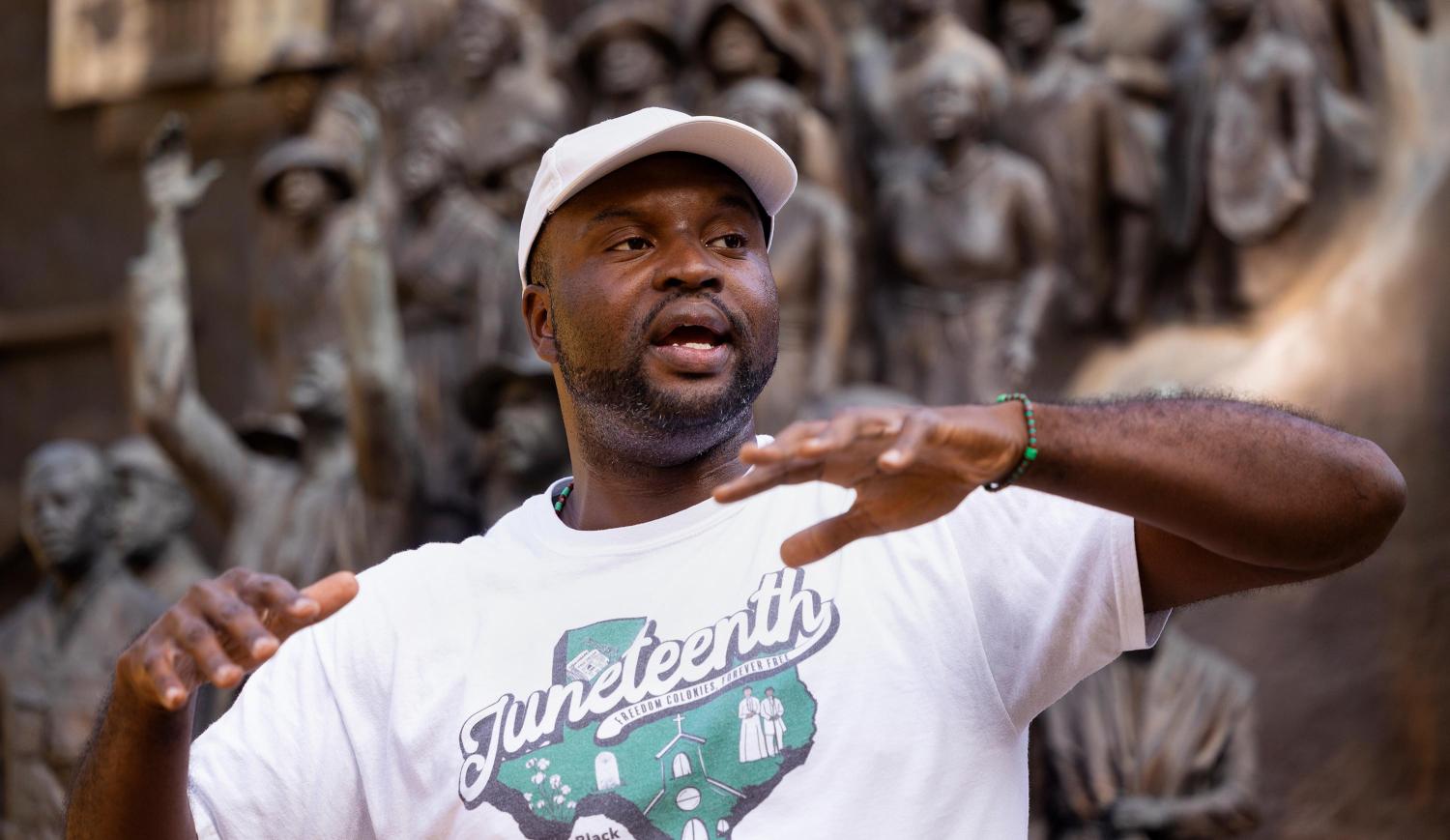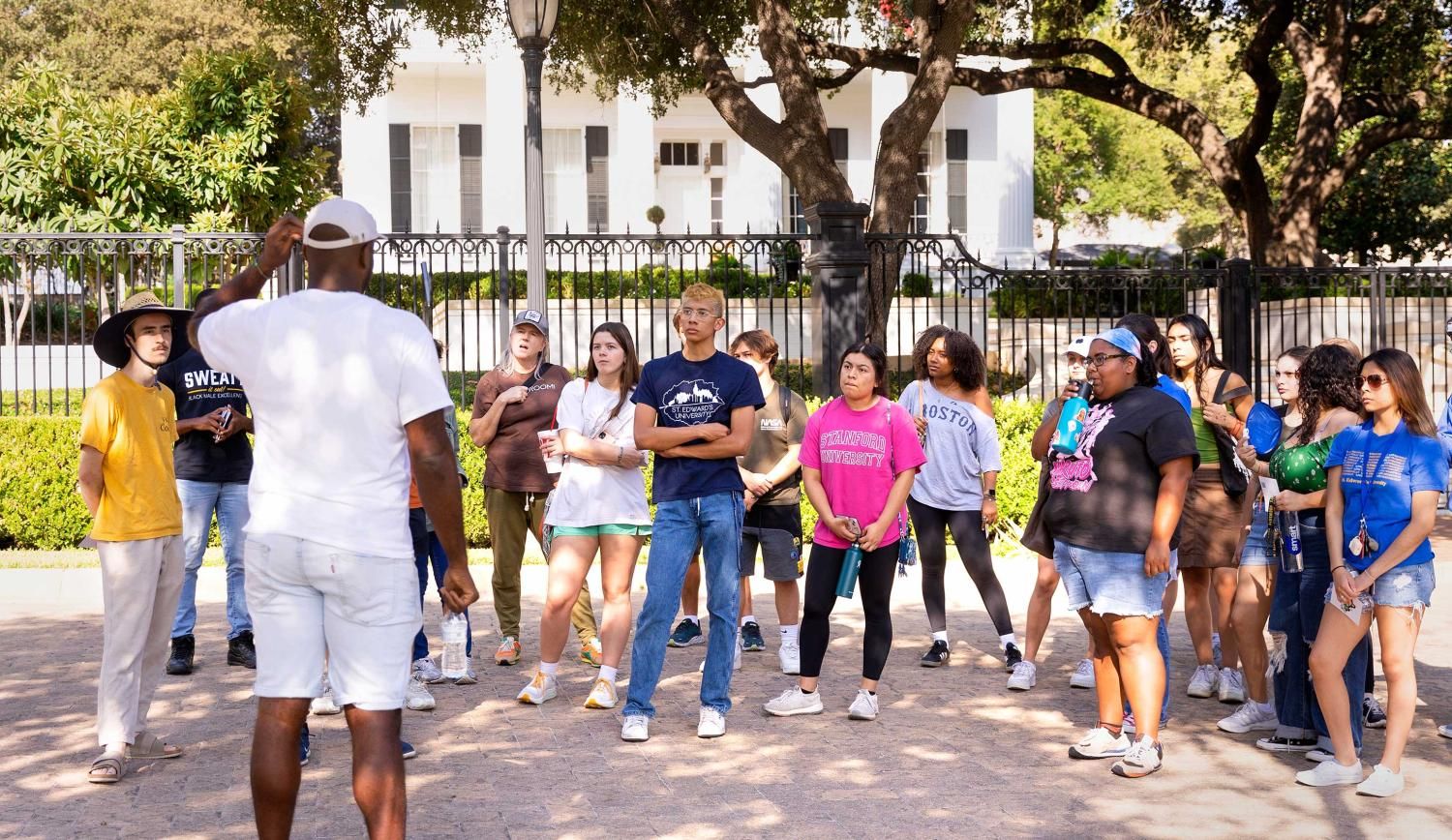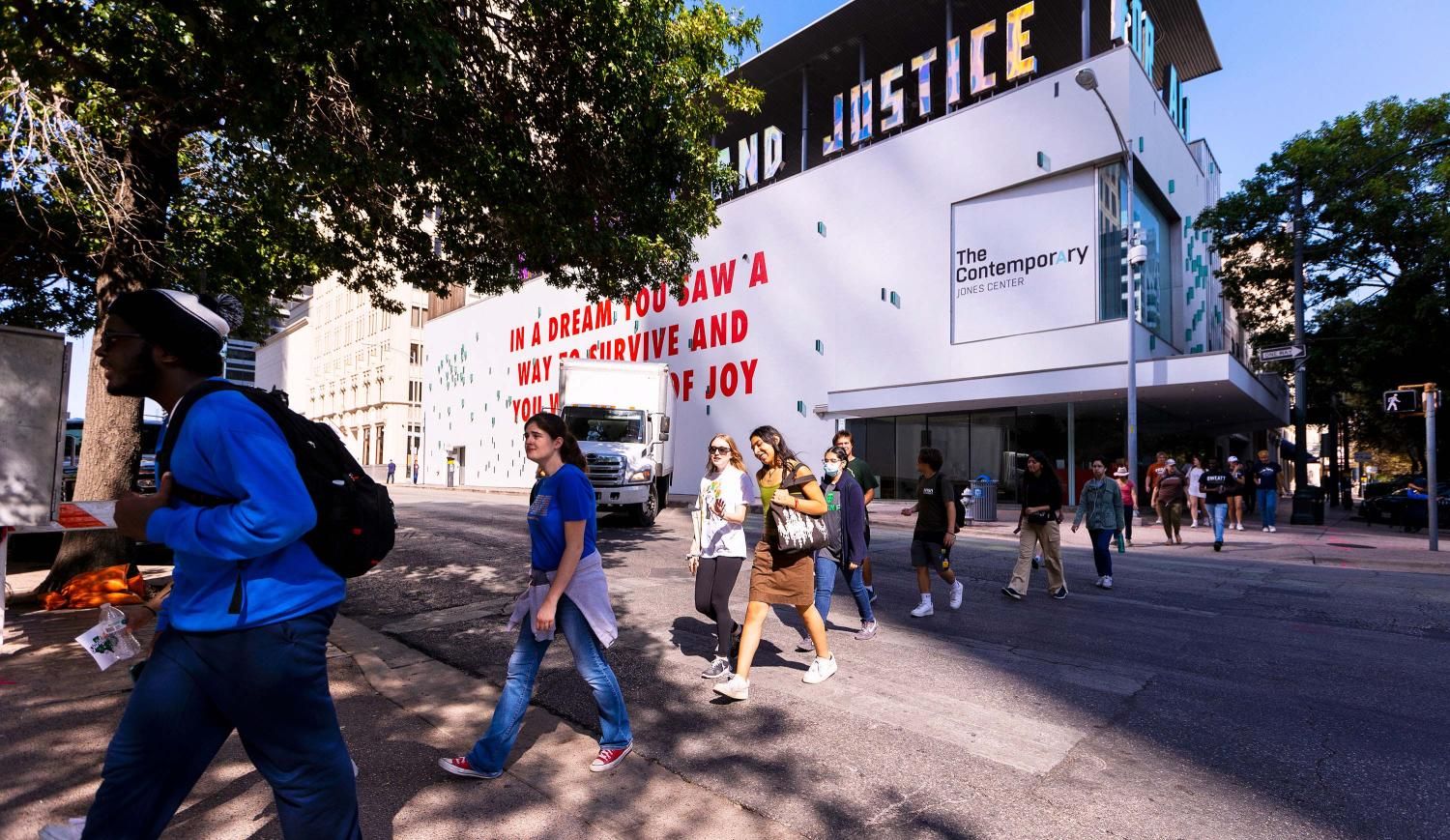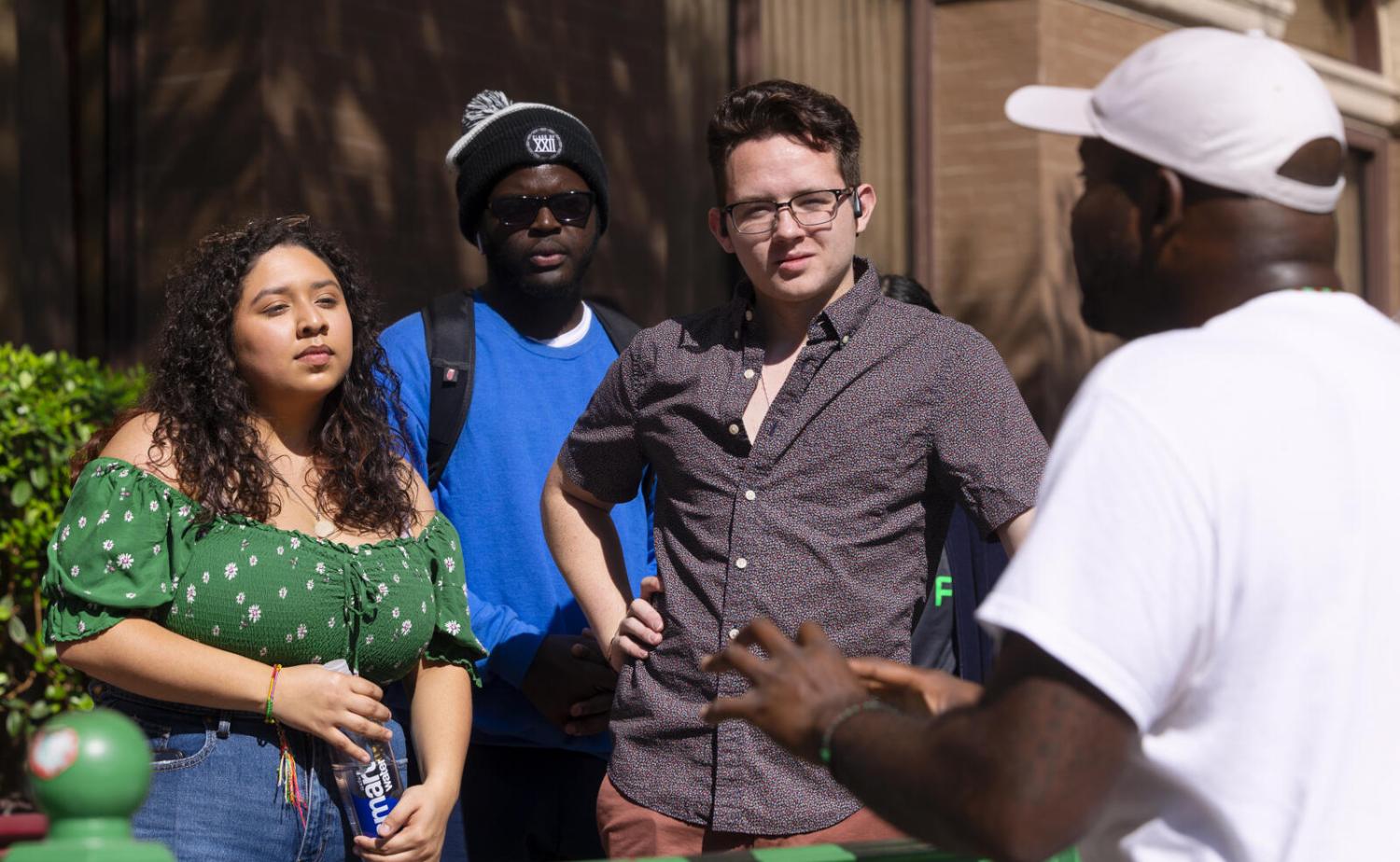Reckoning with Black History
George Floyd’s murder in 2020 sparked a national conversation around race, spurring many individuals and institutions to examine their own ties to racism in America. This year, freshmen at St. Edward’s also contemplated and discussed race through the university’s common theme, Reckoning with History.
As part of the Freshman Seminar, all incoming students read the book How the Word Is Passed by Clint Smith, which explores how slavery continues to shape America today. Students and their professors also participated in a Black Austin Tour, created by native Austinite Javier Wallace, who earned a PhD from The University of Texas at Austin. The downtown walking tours focus on the significant contributions African Americans made to the city.
“There was a time, in Travis County, that 40% of this population were enslaved Black people,” Wallace says. “The building blocks of this entire city and what it becomes to this day, it’s still off of Black people’s labor, expertise, knowledge, love, hopes, dreams.”
Wallace’s tour through the heart of downtown Austin sparked thoughtful dialogue as Hilltoppers learned about centuries of Black history and experiences that are seldom told.

State Capitol
The tour begins at the State Capitol, built with granite and limestone quarried by prisoners entrenched in convict leasing. The brutal practice implemented after slavery involved mostly African American prisoners, who were contracted out to perform cheap labor across the state.

Texas African American History Memorial
On the capitol grounds, Wallace stops at the Texas African American History Memorial, which recounts African American history dating back to the 1500s. Several important leaders, such as U.S. Rep. Barbara Jordan and Texas Revolution fighter Hendrick Arnold, are recognized.
“Recognizing that America was built on the backs of African Americans is a reality that needs to be understood by everyone. The Black Austin Tour helped me see that slavery was not just for farming but also cleaning, cooking, construction and many other tasks contradictory to agriculture, making this important sentiment easier for people to understand.”
– Mya Duncan ’26, Global Studies

Texas Governor’s Mansion
When the Texas Governor’s Mansion was built in 1856, slavery was still legal and common across the state. Research shows that slave labor was used in the construction of the mansion and for years afterward, enslaved African Americans were servants of the mansion, managing the housekeeping, kitchen work, stables and groundskeeping.

Wooldridge Square
Following Emancipation, African Americans began to establish a life for themselves. Before the Austin History Center was built south of the square, two historically Black churches were established along the same block. The first HBCU (historically Black colleges and universities) west of the Mississippi River, Paul Quinn College, was founded on the same site in 1872.

Congress Avenue
Before integration, some establishments on Congress did not allow African Americans inside unless they were employees. Students from area universities, including St. Edward’s, picketed in front of the historic Paramount Theatre and forced its desegregation. Students continued to protest, ultimately leading to the desegregation of lunch counters and stores.
“Dr. Wallace pointed out that slavery was forced onto many different cultures of African people and grouped them as a single entity. The lost connection to their homes and culture created a new identity … as nothing more than a resource and asset. Even after slavery was abolished, the process of dehumanizing Black people left traces of the hatred and set off a system that still affects the U.S. today.”
Jose Calabaza ’26, International Business
Sixth Street

During their walk down Sixth Street, Wallace, students and professors pause in front of the legendary Driskill Hotel to talk about its context in Black history. The tour culminates on Sixth Street, where historic Black businesses are spotlighted. In 1906, Black Austinites refused to ride streetcars, which ran on Sixth Street, after city officials announced they would be segregated. Wallace also highlights the music scene. His uncle opened the now-defunct Catfish Station in 1987. The Black nightclub was influential in the South by Southwest Music Festival introducing R&B and hip-hop showcases.

“Dr. Wallace illustrated how none of the public monuments and markers on the Capitol grounds and around downtown Austin are neutral accounts of history, and he asked us to question whose stories they tell and whose they leave out. I hope we all look at Austin through a new lens after going on the tour and see how our whole city and country has been shaped by African Americans.” - Alex Barron, Associate Professor of Literature, Director of Freshman Seminar
Photography by Chelsea Purgahn
Equity Hall
The renaming of Doyle Hall to Equity Hall in 2022 represents one way St. Edward’s continues to reckon with its own history. The building is now home to the Office of Equity and Employee Relations and displays work from faculty and students focused on equity and justice.


